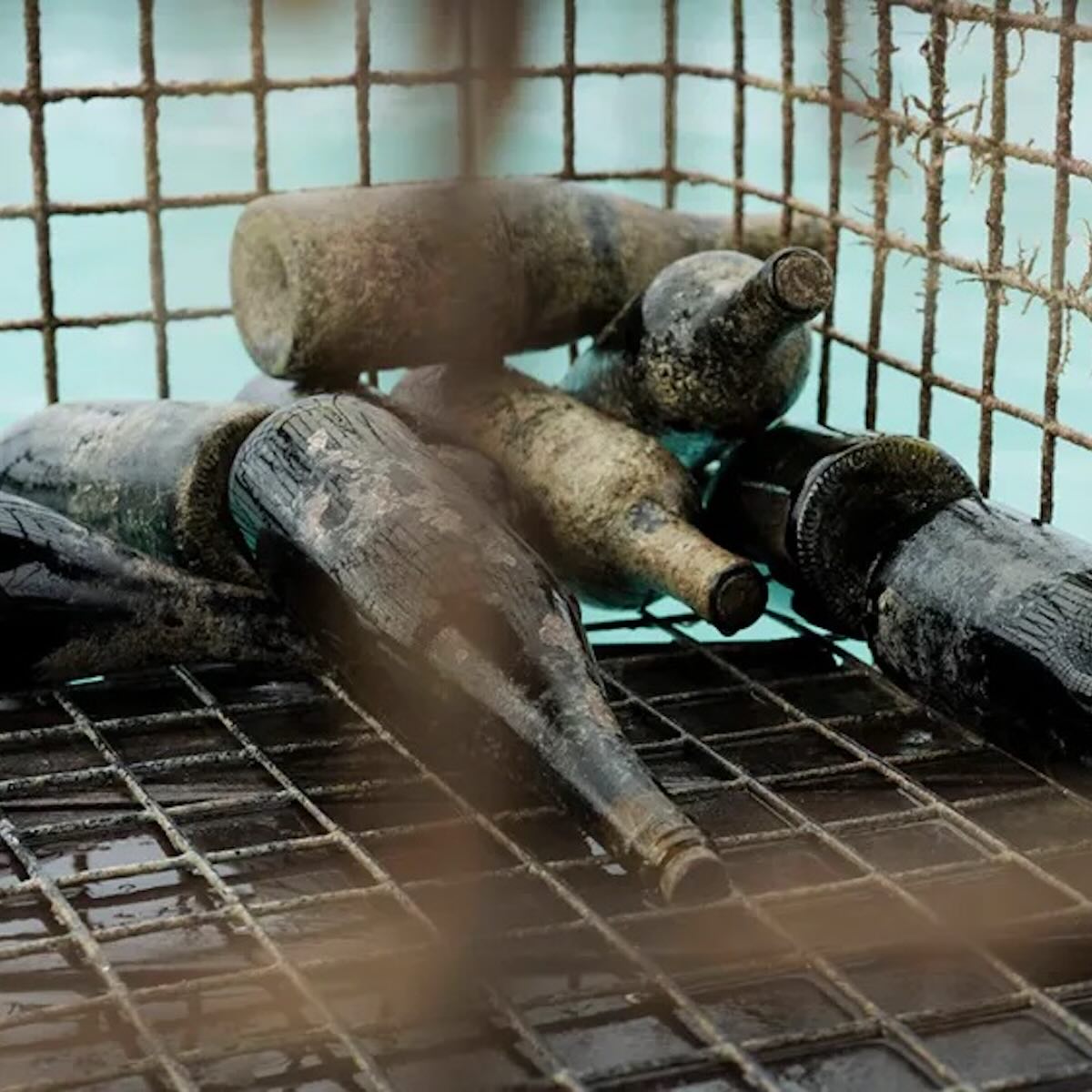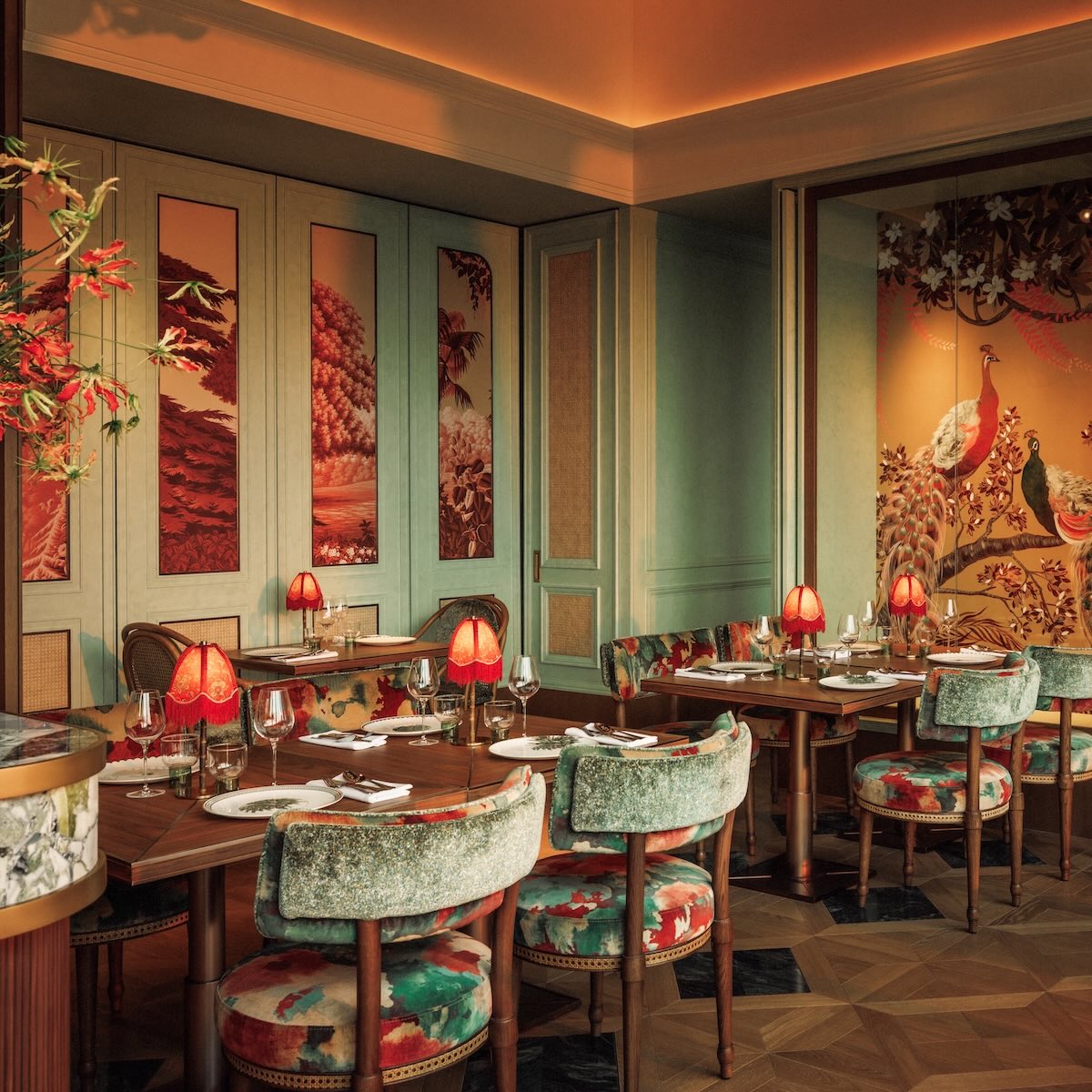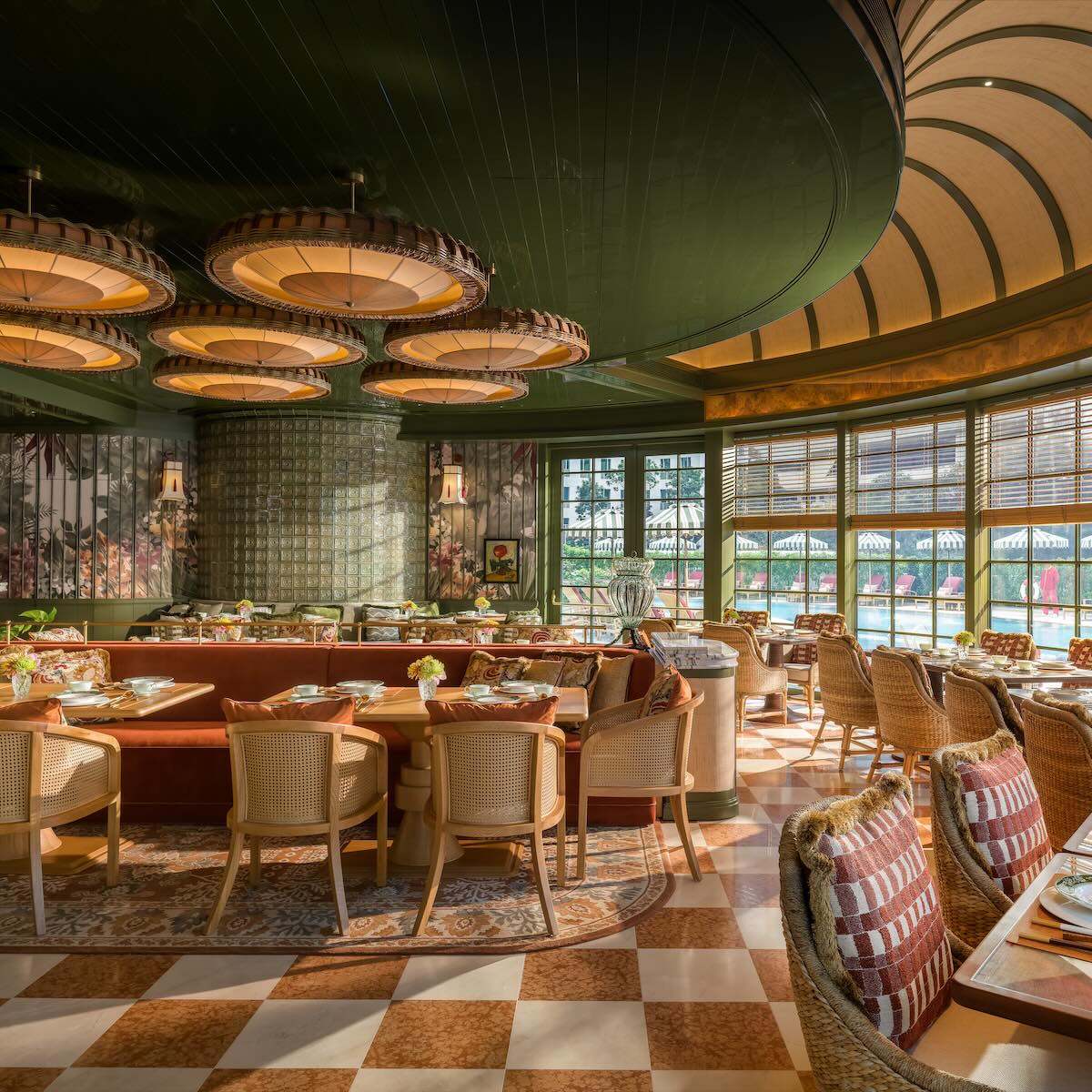Being a visionary can be a long and arduous journey.
Massimo Bottura probably knows this better than most. When he opened Osteria Francescana in 1995, the chef was lambasted for his attempts at reinventing Italian food for the modern age. Locals could not see the appeal of his eclectic transformation of traditional flavours, nor the need for it.
But scepticism was not enough to deter Bottura, who had cooked with Alain Ducasse in Monte Carlo at his Louis XV restaurant just the year before. He had learnt from the best and he was determined to succeed. His dedication and persistence paid off—in 2000, amid Osteria Francescana’s toughest years, Ferran Adria came a-knocking and a stint at El Bulli followed, deepening Bottura’s understanding of molecular gastronomy and his self-confidence in his gastronomic vision.
From then on, fortune soon began to favour the fearless chef who dared to defy convention.
Osteria Francescana received its first Michelin star in 2002, then a second in 2006 and a third in 2012, all maintained till date. As Bottura climbed, the accolades kept coming. His rise to fame was all but inevitable. By 2015, his name, mission, and restaurant had been beamed onto countless screens around the world as the chef was prominently featured on Chef’s Table, the hit Netflix series. More recognition soon followed; Osteria Francescana placed No. 1 on The World’s 50 Best Restaurants list in 2016 and 2018, and a Michelin Green Star honoured his commitment to sustainability. He has written cookbooks, co-founded Food for Soul with his wife Lara Gilmore, played an active role in the fight against food waste, and opened charity refectories around the world.
Ahead of his highly anticipated appearance at MGM x RR1 Hong Kong Culinary Masters Macau, taking place at MGM Cotai, Macau, on 10–13 August 2023, Robb Report Hong Kong speaks with the celebrated Italian chef about his long journey to number one, how art influences his menus, the importance of growing slowly, and why hard work will always outweigh talent.

What inspired you to become the chef you are today?
I didn’t purposely choose to become a chef. I’d rather say that the profession chose me.
You know, I always keep the door open for the unexpected. I went in and never came out. The passion and love for cooking have been passed down in my family for generations. When I decided to change my path in life, it was my mother who convinced everyone that I would never make a good lawyer and that I should channel all my energy into a project I believed in. My father disagreed and I remember that in one of our many arguments I told him, “You will see; one day, I will bring three Michelin stars to Modena!” From that moment, that goal has been a constant beacon. It hasn’t been easy. In the darkest moments, I held on because I had to prove my mother right.
Today, I could not imagine my life away from cooking. Music, art, creativity, research, tradition, territory: it is all connected, it is my language, it is my path, my life. I have always taught my kids to go deep into things because one day, those interests will turn into passions, and only through passions do you live and transmit emotions.
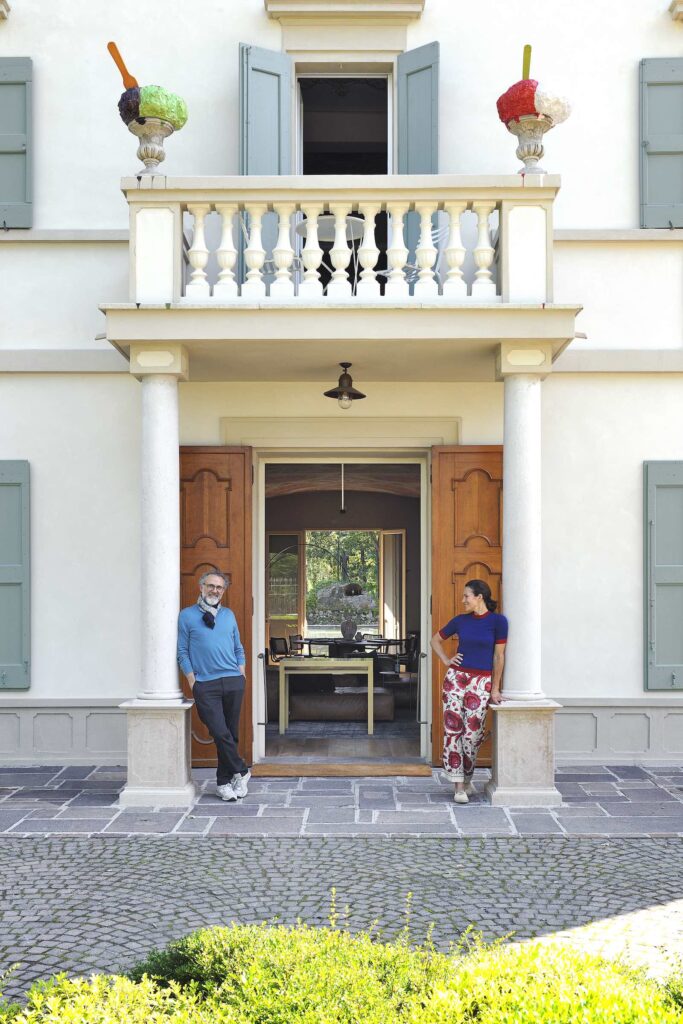
You were born in Modena, and you chose to remain in Modena to operate Osteria Francescana. How have the city and the Emilia-Romagna region influenced you?
I was born in Modena, right in the centre of Emilia Romagna. It’s the area where balsamic vinegar and Parmigiano Reggiano have been produced for the past 500 years or more. I often say that my muscles are made of Parmigiano Reggiano and my veins are made of balsamic vinegar; it defines who I am and where I come from, as a person and as a chef. For me, cuisine is the expression of the territory. In Modena, this translates into the incredibly rich variety of ingredients, artisanal techniques, culinary traditions, and family rites, as well as the centrality of time. The long ageing processes, the fermentations, the vinegar resting in the barrels are all tangible manifestations of our way of life which can be best described by the Latin expression: festina lente—to hurry slowly.
Modena is not simply my hometown, not only the city where I was born, and where I grew up. Modena is the city where I chose to live and work. Modena is my imagination, my past and my future, and one of the most important sources of inspiration for my dishes.
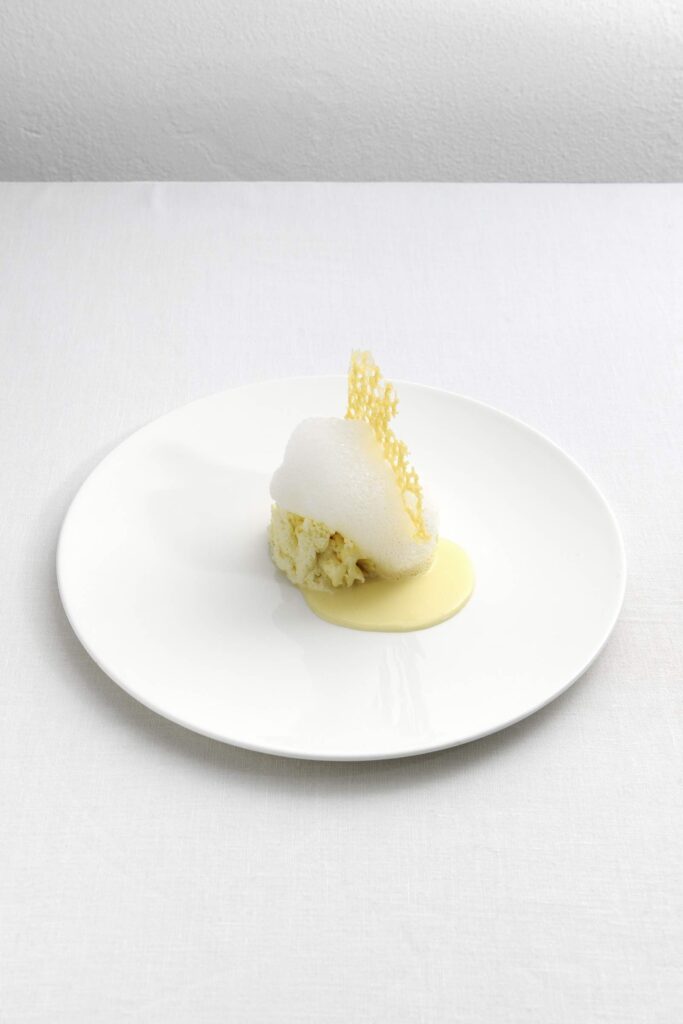
It has not always been an easy journey for you in the world of gastronomy. Public response to Osteria Francescana is positive these days, but when you first presented your ideas, critics questioned your approach. Which dish of yours do you feel was misunderstood back then?
I often tell the story of Five Ages of Parmigiano Reggiano. The first version of this dish was born over 35 years ago when I opened Trattoria del Campazzo. I was a young chef back then, but I had a clear idea of how I wanted to represent Emilia Romagna in my cuisine, respecting the territory while looking at tradition from 10 kilometres of distance, filtered through a contemporary mind. I was convinced that Parmigiano Reggiano was the one ingredient able to paint a portrait of the region, I just had to find a way to bring this into a dish. So, I began to use techniques to experiment and transform this incredible cheese in a way that nobody had ever done before.
The dish evolved with me as I grew up as a chef, and digging deep into my roots I found out that Parmigiano Reggiano was not just any old cheese, but a living and breathing portrait of Emilia-Romagna, with its fog, humidity, and deep respect for the passing of time, which together made the secret of the ageing process of this world-famous cheese. People from Modena were sceptical about my intentions, but I continued making it until it became the best dish of the decade. In its final version, the dish is a celebration of the region of the cheesemakers from the Apennines to the Po River, but also of the fog and the time flowing slowly in Emilia. All embodied in five different ages: a 24-month, 30-month, 36-month, 40-month, and finally a 50-month-aged Parmigiano Reggiano. The result is a white-on-white monochrome, a temporal sculpture bathed in fog, silence and time, which had become a portrait of the Emilian countryside seen from 10 kilometres away.
This was the only dish I brought to Osteria Francescana from Campazzo, and the only dish that has never been taken off the menu. Today, it is also part of the experience of Francescana at Maria Luigia, taking place at our guesthouse Casa Maria Luigia, where every night we serve a menu featuring the most iconic dishes from the restaurant in Via Stella.
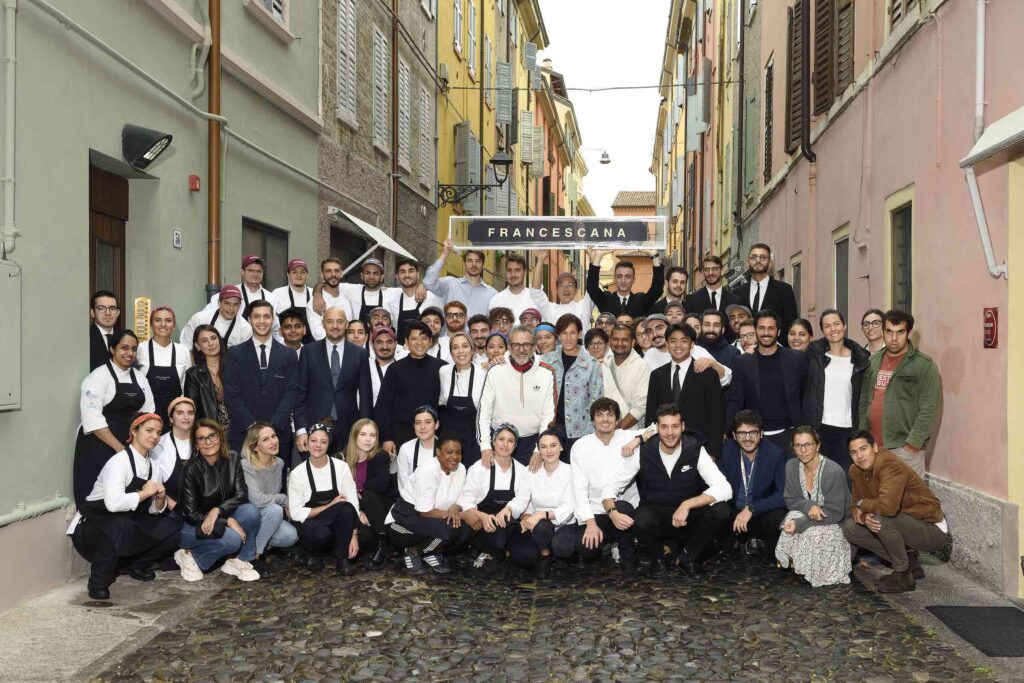
You’ve received the highest honours in the food world. What’s your secret to success?
My team. As I always say, a chef cannot be a chef without his team.
“We are the revolution,” Joseph Beuys used to say. Change happens when we come together. When we reach out to people with different perspectives and cultures, share ideas and knowledge, and together we grow. This is what makes the Francescana family unique and helps us make dreams come true, together. My team is my family—we win together, and the joy is doubled; we lose together, and the disappointment is halved. My team is my future.
How do you approach the design of your dishes and the creation of your menus today?
Osteria Francescana’s latest menu is called “We Are Here” and it is a homage to Bob Dylan, who continues to be a personal inspiration and an influence on multiple generations of artists. Together with my team, we undertook the challenge to reinterpret our history by reimagining the most iconic and iconoclastic dishes of Osteria Francescana. Over 30 years have been filtered through the diverse cultural backgrounds and experiences of over 150 people belonging to the Francescana family. The result is a contemporary menu rooted in the past and dancing with the future. “We Are Here” is an evolution of our evolution. Alone, I am Massimo Bottura; with my team, we are Osteria Francescana.
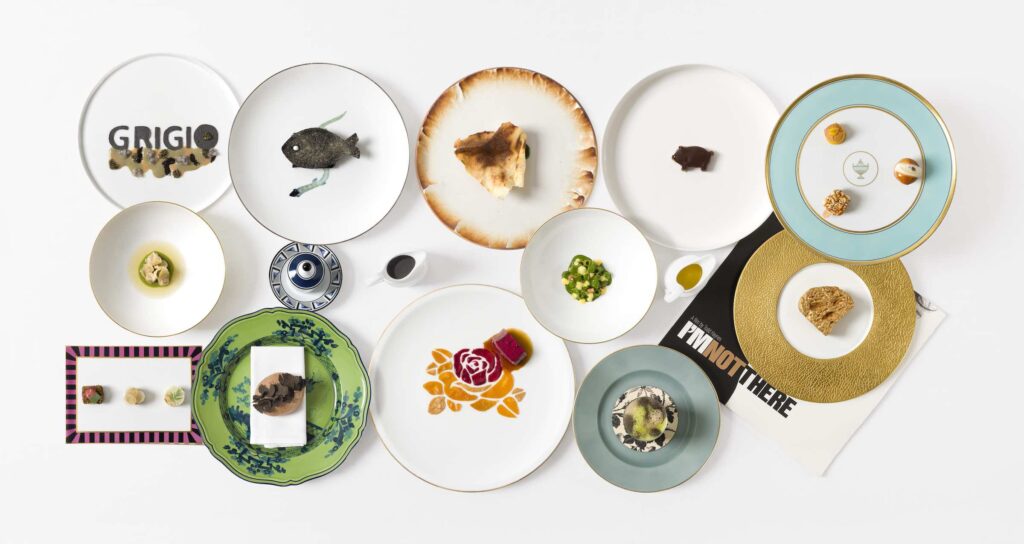
Art plays a big role in how you design your menus. Can you tell us more about this?
Of course. Before I met my wife Lara, I thought art ended with Duchamp. I read about the Impressionists, the Fauvists, the Cubists, the Futurists, but I had never explored the world of the contemporary. Lara made the invisible visible to me. From that moment, contemporary art has been part of my life and has deeply influenced my cooking. Because the artist is not the one who amazes with technique, but the one who knows how to reveal a different aspect of reality, to grasp the poetry in the everyday—this is what I love about art. Carlo Benvenuto expressed something similar, representing three glasses as a work of art. The glasses are the everyday. If you look at them with eyes lost in custom, you see three table glasses. Looking at them with eyes full of poetry, you can see light reflected from a unique fusion of Murano glass, and the glasses become a work of art. Through this reflected light, the artist is able to communicate emotions. Art is present even where few can see it.
And what about music?
I was 14 years old when my brother introduced me to music, real music. From that moment, I started collecting jazz. And when you’re into jazz, you never get out of it. A jazz musician is like a great chef. He does improvisation, but controlled improvisation. Because to improvise, you have to know everything and forget everything. In cooking, it’s the same thing. Picasso said, “When I was twelve, I painted like Raphael, but it took me a lifetime to learn to paint like a child.” You have to know the past, analyse it critically and not nostalgically, to take the best and bring it into the future, reworking it through your own experience, in a contemporary key.
Billie Holiday was jazz. With all her imperfections, she could convey the deepest emotions, for she sang her life, and the night before she lived what she sings the next day. In jazz, it is the dissonance that makes the melody harmonic, the silences and the impurities of sound that open new doors and make the invisible visible. Like a tart that falls on the floor, breaks, and gives birth to something unexpected, something magical. It is the poetry of error.
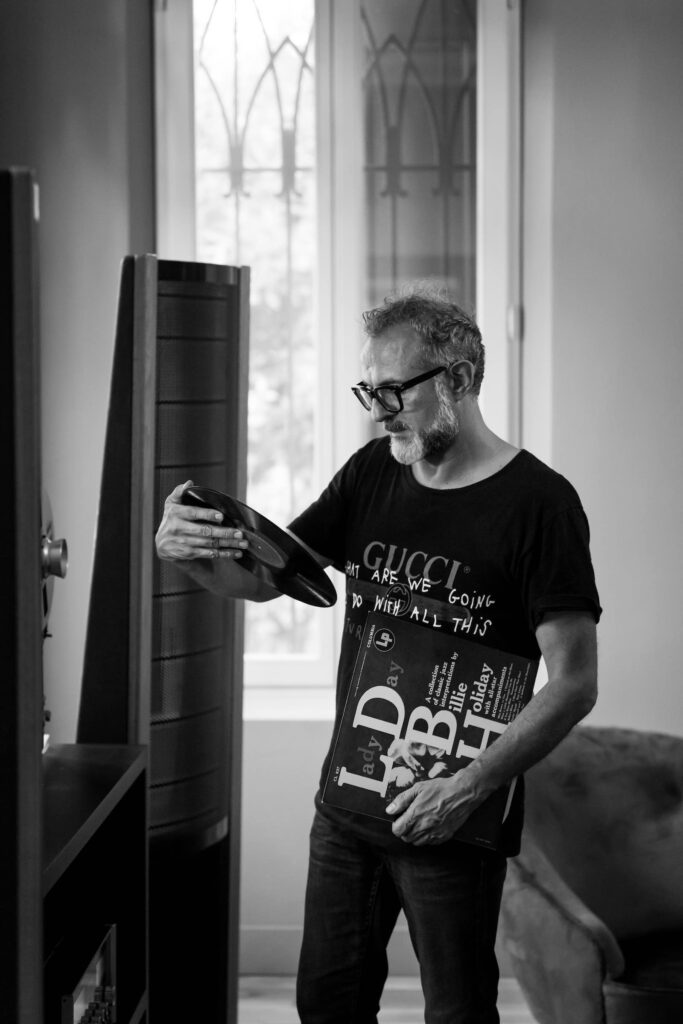
Pushing Italian cuisine past its traditional boundaries is your modus operandi, but is there something you enjoy so much in its traditional form that you would not alter it?
The idea that has always led my work and that of my team at Osteria Francescana is that of “tradition in evolution.” We look at the past in a critical way, not a nostalgic one. This doesn’t mean disrespecting our culinary traditions, or throwing them away; instead, it implies a deep knowledge of it. Our work is not about forgetting the past but finding the most appropriate way to bring it into the future, with evolution and resilience. We take the best of the past and bring it into the future. Recipes are not meant to be followed literally. They are stories, photographs of a precise time in history. I take recipes as a starting point from which I begin the path of creation.
What’s your advice for aspiring chefs or even the humble cook at home?
My advice to everyone who wants to become a chef is the same that my father-in-law gave me nearly 20 years ago: “Be like a tree—grow slowly.” I would suggest they seek out their true motivations, passions, and inspirations, and to keep a small window open for poetry: read, travel, look at art, listen to music, and dig as deep as you can into your culture to understand who you are and where you come from. And never forget that talent is only 10 percent—the remaining 90 percent is all hard work.
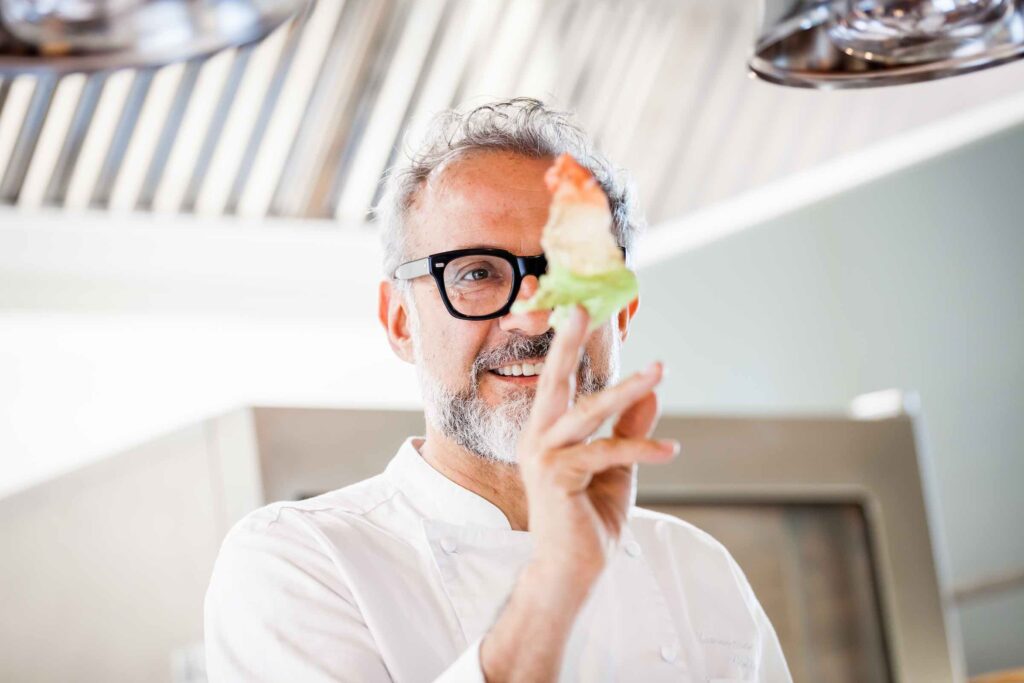
What do you consider to be “the future of food”?
Food waste is one of the most important issues that we are facing today. We overproduce food globally and then one-third of that production is wasted. How long can this continue? It just makes no sense. Food waste is also one of the biggest contributing factors to climate change. This is an everyday issue that everyone can help solve through small gestures that can make a difference. And today, more than ever, we have the most powerful means at our disposal to spread ideas and trigger a revolution. And every chef, every restaurant, has a duty to try to stimulate this change through the value of hospitality, the power of beauty, and the quality of ideas. I am very confident that the future of cooking will go in this direction; I see young people becoming more and more aware and empowered. As a Global Goodwill Ambassador for the United Nations Environment Program (UNEP), I hope to inspire everyone in simple ways to take action. As consumers, as chefs, as community leaders, we can make a difference by putting the health of the planet first. Now more than ever, we have the power and responsibility to act. No more excuses.
What can diners expect from you and your team at Culinary Masters?
I am very happy to be part of the first MGM x RR1 Hong Kong Culinary Masters—I can’t wait to see you all at MGM Cotai in Macau. My team and I will cook some of the most iconic dishes from Osteria Francescana. I’m looking forward to this beautiful event dedicated to food, culture, and creativity.
This story is part of a series of interviews with the chefs of MGM x RR1 Hong Kong Culinary Masters, hosted at MGM Cotai in Macau on 10–13 August 2023.
For more information on MGM x RR1 Hong Kong Culinary Masters Macau, click here.
Visit rr1hongkong.com for details on all other exclusive RR1 experiences.







